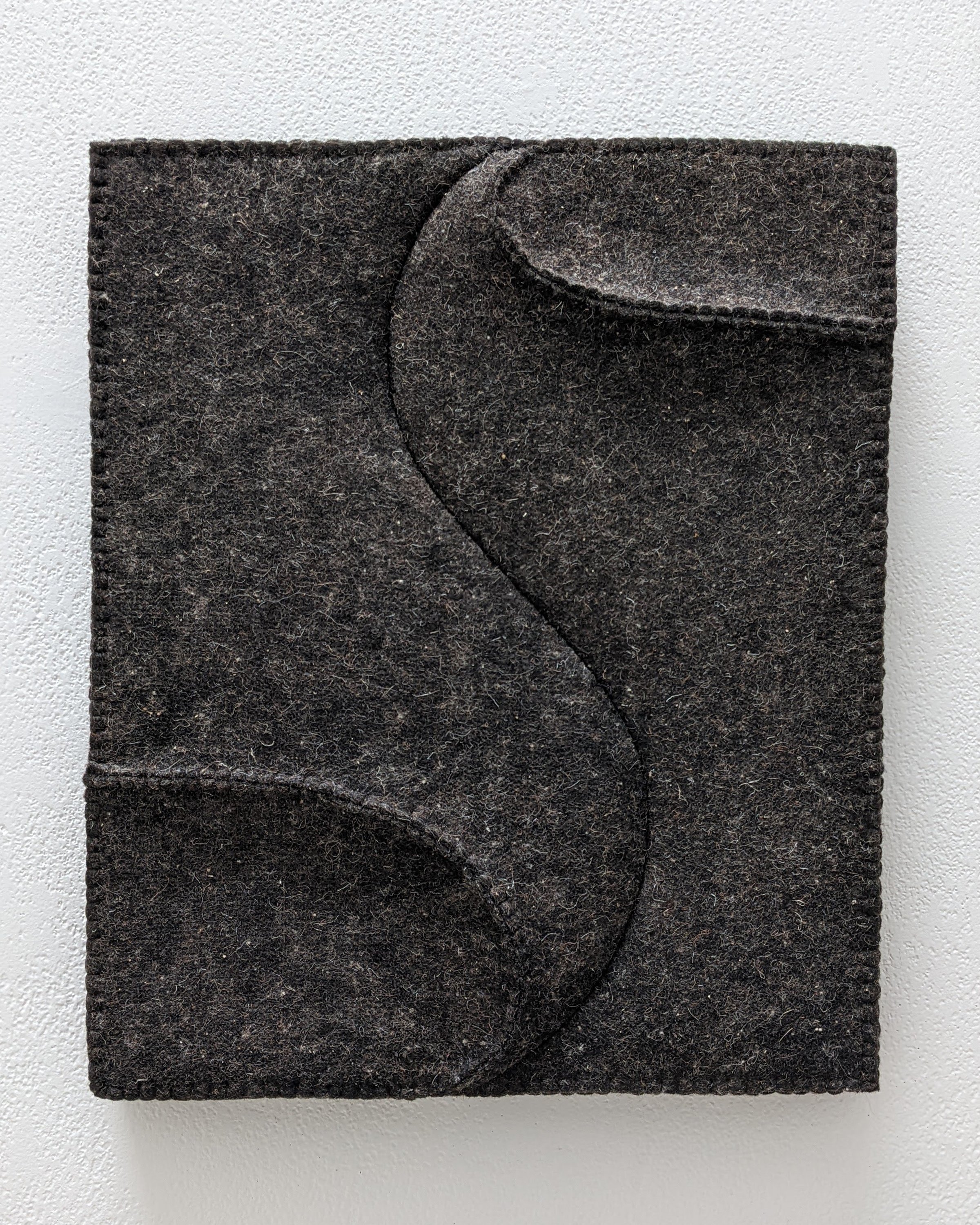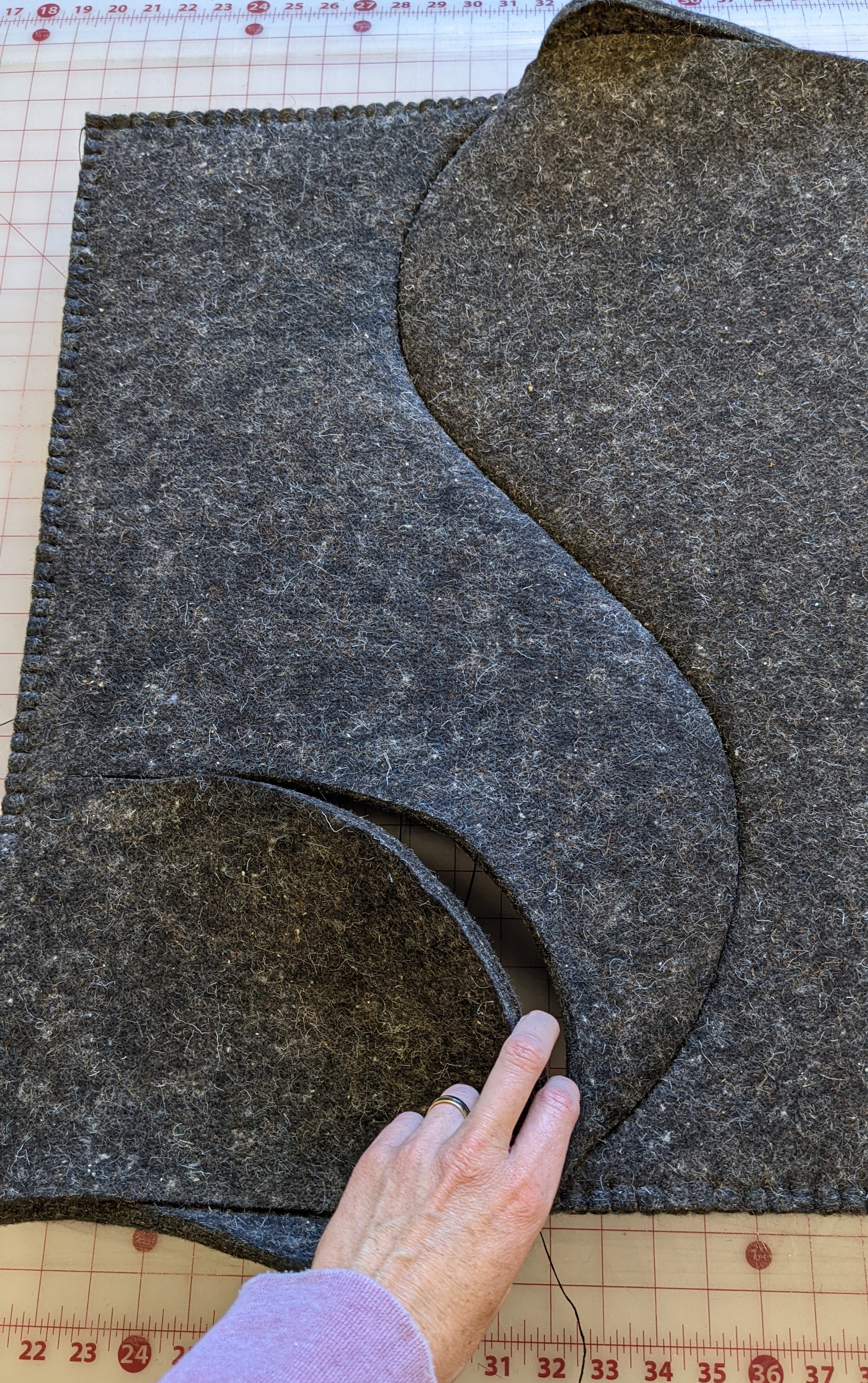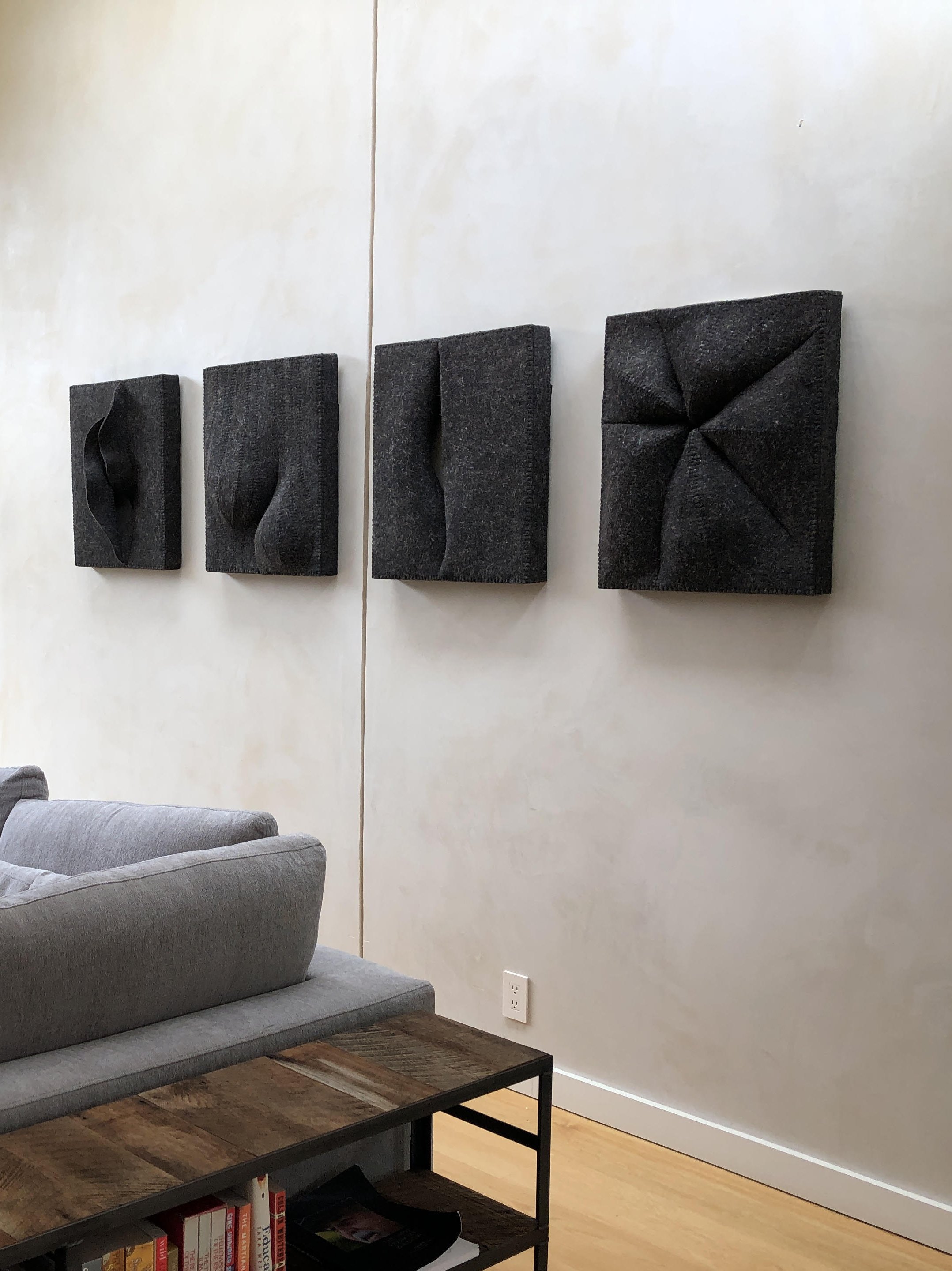Stitched Industrial Felt Fiber Wall Art: The End of the Grey Curve Composition Series
‘Trigonic’, one of the final three Curve Compositions. This piece uses only three formerly flat pieces of felt to create subtle curves down towards a triangular hole that reveals the wall behind.
When it comes to creating sculpture- heck, all art- the materials one uses are obviously a huge part of the mix… along with the ideas and the work to actually change them into meaningful objects. And sometimes those materials guide you, inspire you… and limit you.
Which is a good thing. Speaking as an artist, it can be helpful to establish some parameters or rules for oneself, at least for a particular body of work. And currently I find myself at the close of this particular grouping of pieces due to the fact that I have run out of the materials that unite them: the very particular batch of grey industrial felt that I’ve been using to create my Curve Compositions up to this point.
As a quick recap, I originally saw industrial felt as a means to an end, the material that could be used under/inside needle felted wool sculptures as an armature, or a supportive form. I would stitch ‘skins’ to form the shape I wanted, stuff them, and then needle felt over and into those forms in order to create larger felt sculptures.
And then I realized how much I like the material itself, and I used it to make Holdable sculptures as part of my hands-on/touchable InTouch body of work, that the public could move, wear, and manipulate in a museum setting for an interactive experience.
As I figured out how to make flat sheets of felt into three-dimensional forms through patterning, I also noticed how much this particular thick felt— almost half an inch thick— could hold its shape when stitched, more like slabs of clay than thin fabric. And that led to the Curve Compositions.
‘Cresting’, one of the final three Curve Composition wall sculptures. Its name comes from the way it looks like waves meeting and forming peaks.
These hand-stitched wall sculptures are subtle, organic, abstract, and orderly experiments to see what elegant forms I could create by joining simple, humble felt pieces together in different compositions. They have no stuffing although some appear quite solid— from behind you can see they are self-supporting, and presented on deep wooden stretcher bars.
‘Cresting’ as a work-in-progress: composing the planes and curves by cutting and stitching.
And now, with fifteen pieces created (seven have found homes with collectors as of this writing), I have come to the end of the series. But, you may ask, can’t you just buy more of the same felt and make more? Nope. Well, not exactly. Industrial felt like this isn’t made for its looks, but rather for its function. The manufacturer guarantees the thickness and density and that a certain percent will be wool versus other recycled fibers, but there are no promises about color. So, while the product would be quite similar, the pieces would not appear to be part of the same series. They wouldn’t play together as nicely as these ones, pictured on the wall of a collector:
And that doesn’t bother me. Trust me when I write that I have plans for more along these lines; in particular I’ve secured some ‘design felt— smoother, thinner, more evenly toned than this— for more fiber wall sculpture experiments. More to come on that. And if you want to read more about the Curve Compositions, check out this post. And of course if you want to buy some, you can find them here.
‘Undulate’, the final Curve Composition I created out of this batch of grey industrial felt, shows its subtle curves leading down to a hole that reveals the wall behind it.





